This article covers the following areas –
- Why Choose Spider Plants?
- Choosing the Right Plant
- The Best Pot for Your Plant
- Lighting Needs
- Watering Your Spider Plant
- The Right Temperature
- Feeding Your Spider Plant
- When to Repot
- Propagating Spider Plants
- Preventing Brown Tips
- Dealing with Pests
- Final Note
- Frequently Asked Questions
Today, I’m thrilled to share my journey and tips on nurturing Spider Plants, one of the most forgiving and beautiful additions to any indoor garden. Known for their ability to purify the air and bring a touch of nature indoors, these plants are perfect for gardeners of any skill level.
To care for a Spider Plant, place it in bright, indirect light and water when the top inch of soil is dry. Use well-draining soil and a pot with drainage holes to avoid soggy conditions. Keep it in moderate temperatures, between 60-75°F.
In our upcoming guide, learn more detailed tips on propagating and troubleshooting common issues with Spider Plants to keep them thriving.
Why Choose Spider Plants?
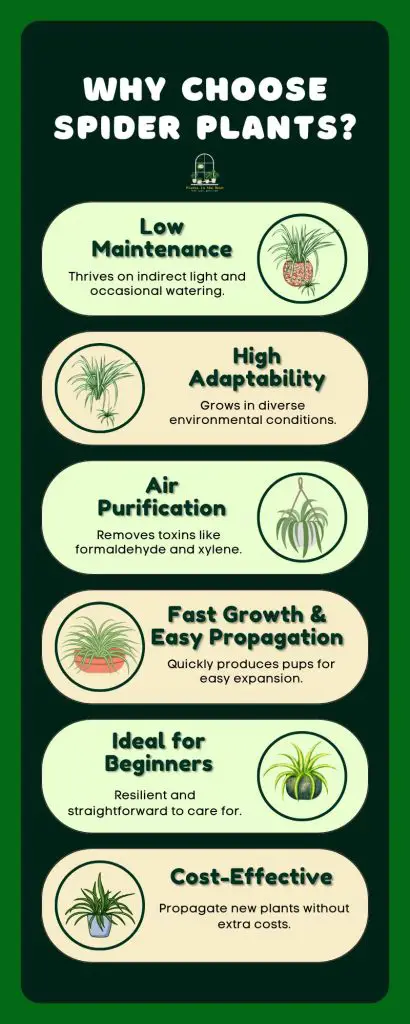
Spider Plants are ideal for indoor gardening as they require minimal care, adapt to various environments, and improve air quality. Their quick growth and simple propagation make them perfect for any home.
Spider Plants stand out in the world of indoor gardening due to their low maintenance needs. They thrive under indirect sunlight and can tolerate some neglect, making them ideal for those who may not have much time to dedicate to plant care. This resilience is particularly appealing to novice gardeners.
These plants also adapt well to different living environments. Whether you live in a sunny, humid area or a cooler, shaded location, Spider Plants can adjust and grow. This versatility makes them suitable for various indoor settings, from bright kitchens to dimly lit offices.
One of the most celebrated qualities of Spider Plants is their ability to purify the air. They are known to remove common household toxins such as formaldehyde and xylene, which can emanate from furniture, carpets, and paints. By purifying the air, they create a healthier living environment.
Moreover, Spider Plants grow quickly and can be easily propagated. They produce small ‘pups’ that can be potted separately, allowing you to expand your greenery without additional cost. This feature is especially economical for gardeners looking to fill their homes with lush, vibrant plants without breaking the bank.
Their durability and ease of care make Spider Plants a top choice for both beginners and experienced gardeners. They provide a satisfying gardening experience and enhance indoor air quality, making them a practical and attractive choice for any indoor space.
Choosing the Right Plant

Choose a Spider Plant with vibrant, green leaves and no signs of wilting or brown tips to ensure it is healthy and capable of thriving in your home. A robust appearance indicates good health and a better chance of long-term vitality.
When picking a Spider Plant, carefully examine the foliage. Look for plants that display bright, lush green leaves. These plants are likely well-maintained and show no signs of stress or neglect. Vibrant foliage is a strong indicator of a healthy plant that will continue to grow and flourish in proper conditions.
Avoid any Spider Plants with wilting leaves or brown tips, as these could be signs of improper watering—either too much or too little. Such symptoms may also indicate exposure to too much direct sunlight or possibly even a nutrient deficiency. Starting with a plant that already shows signs of stress can lead to more significant challenges down the road.
Additionally, inspect the plant’s base and soil. Ensure that there is no mold or pests, as these can cause long-term harm to the plant and other plants in your home. Choosing a healthy Spider Plant sets you up for easier maintenance and a more rewarding gardening experience.
The Best Pot for Your Plant
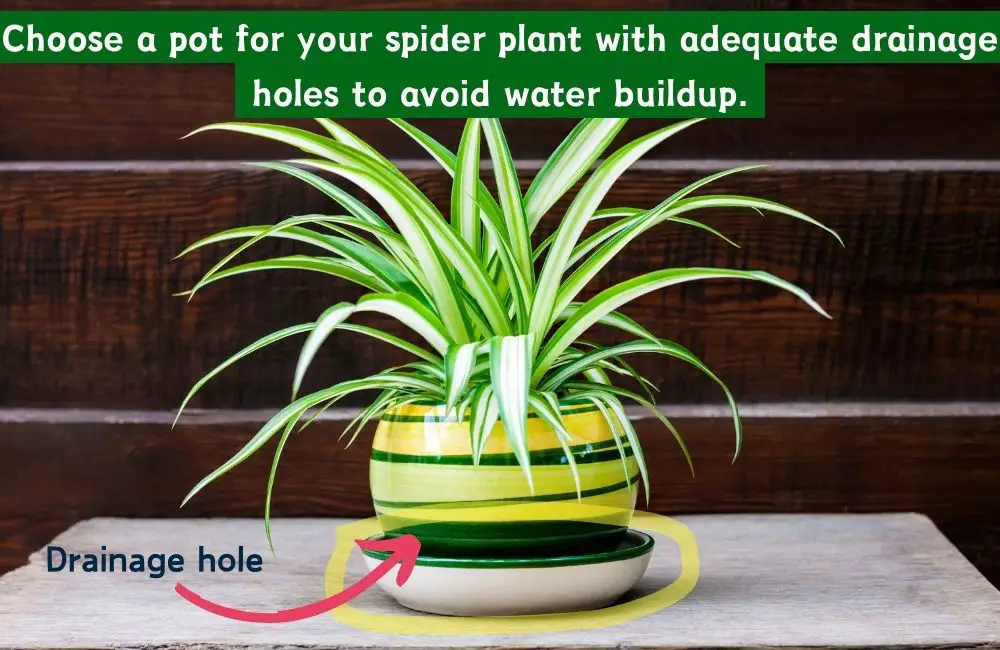
For Spider Plants, choose a pot with adequate drainage holes to avoid water buildup, which can lead to root rot. They thrive when slightly root-bound but still need space to grow without becoming waterlogged.
When selecting a pot for your Spider Plant, it’s crucial to focus on drainage. A pot that allows excess water to escape ensures that the plant’s roots are not sitting in moisture, which can cause fungal diseases and root rot. Materials like terracotta or ceramic are excellent choices because they are porous and allow air and water to move through them, which helps prevent overwatering.
Spider Plants do well when their roots are somewhat confined. This slight restriction can actually help stimulate them to produce more of their characteristic baby plants or “pups.” However, there should be a balance—while the plant benefits from being root-bound to some extent, it shouldn’t be so cramped that the soil dries out too quickly, or the roots have no room to expand at all.
Finally, when choosing the size of the pot, consider one that is 1-2 inches larger in diameter than the current one if the plant is still growing. This sizing gives the Spider Plant enough room to grow without being so large that the soil stays wet for long periods. These factors will help ensure your Spider Plant remains healthy, vibrant, and productive.
Lighting Needs
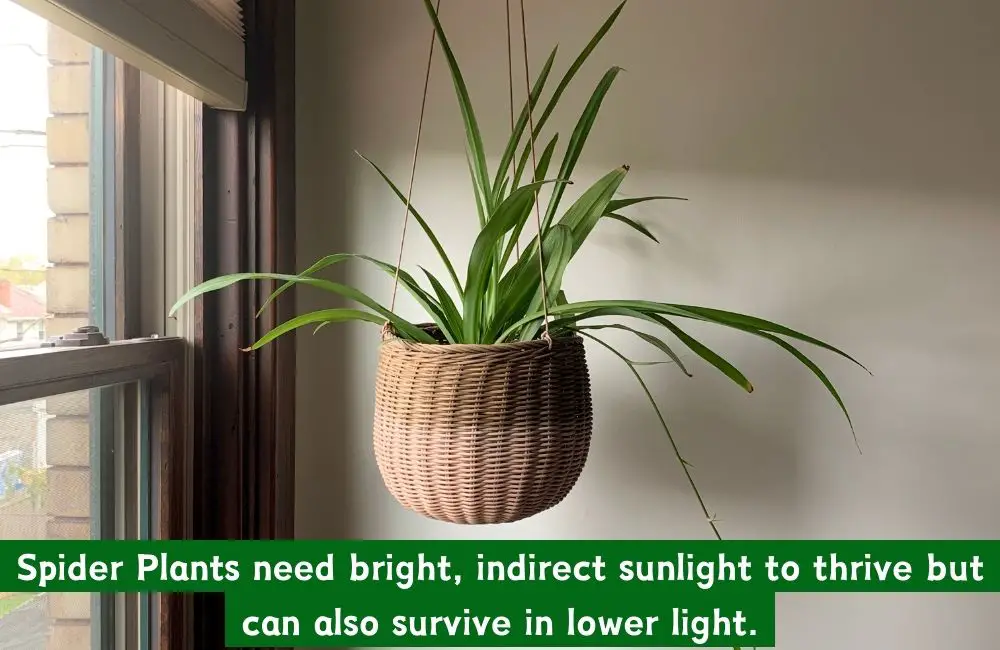
Spider Plants need bright, indirect sunlight to thrive but can also survive in lower light. They do best in places like near a window with sheer curtains that filter the light, avoiding direct sunlight, which can harm their leaves.
Spider Plants are adaptable and can manage in less-than-ideal lighting conditions, making them a versatile choice for indoor gardeners. However, while they can survive in low light, their growth might not be as robust, and the striking variegation of their leaves could fade over time. This adaptability is one reason why they are often recommended for beginners.
To optimize the health and appearance of your Spider Plant, finding a spot that receives indirect but consistent light is key. A north-facing window or a position several feet away from a south-facing window covered by sheer curtains would be ideal. This setup prevents the intense direct sunlight of midday, which can scorch their delicate leaves, leading to brown tips and patches.
If you’re unsure about the lighting conditions in your home, observe the plant’s response after placing it in a certain spot. Too much direct sunlight includes scorched leaves, while signs of too little light include stretched-out leaves and reduced growth. Adjusting the plant’s position based on these cues will help keep it vibrant and healthy.
Watering Your Spider Plant

Water your Spider Plant only when the top inch of the soil is dry to the touch, ensuring you avoid overwatering and preventing root rot. This approach promotes healthier root growth.
Proper watering is crucial for Spider Plants. They prefer to dry out slightly between waterings, miming the natural arid conditions they might experience in their native environment. Allowing the soil to dry slightly encourages the roots to grow stronger as they search for moisture, improving the overall health and resilience of the plant.
Overwatering is one of the common mistakes when caring for Spider Plants. Too much water can lead to soggy soil, which increases the risk of root rot and fungal diseases. This condition is detrimental as it can quickly compromise the plant’s health and is often difficult to recover from. To prevent this, ensure your pot has good drainage, and you’re not leaving any standing water in the outer container.
When watering, do so thoroughly. Water should reach the entire root system, exiting through the drainage holes at the bottom of the pot. This method helps flush out any salt build-up from fertilizers and ensures no part of the root ball is left dry. After watering, allow the plant to drain completely before placing it back in its usual spot. This routine will keep your Spider Plant healthy and vibrant, promoting growth without the risk of water stress.
The Right Temperature
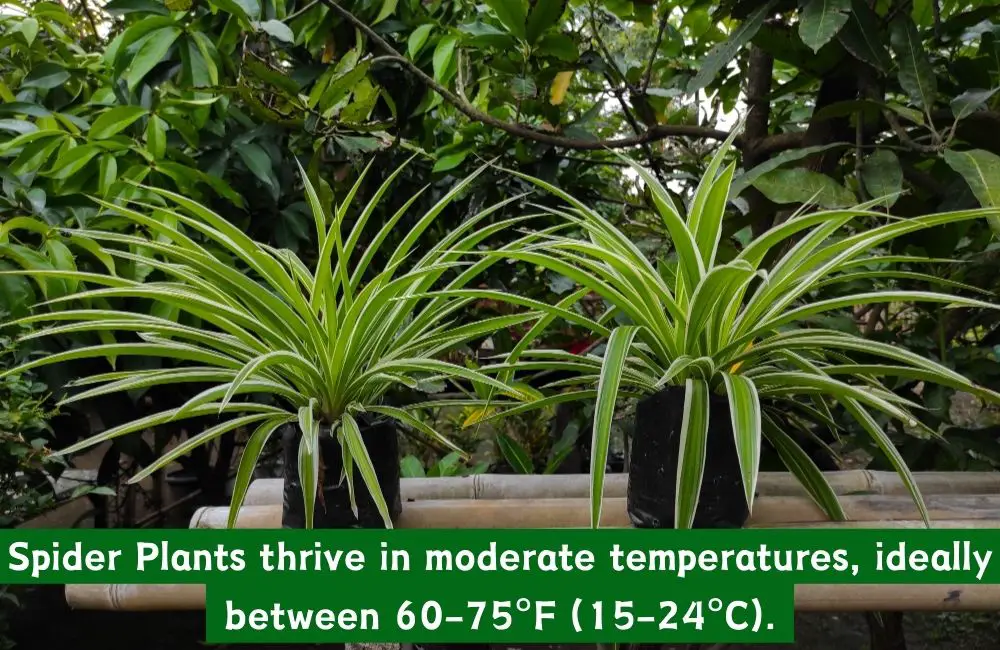
Spider Plants thrive in moderate temperatures, ideally between 60-75°F (15-24°C), which aligns with most indoor environments, making them perfect houseplants.
These plants are quite adaptable but do have limits to the temperatures they can withstand. Keeping them within this temperature range ensures they remain healthy and grow vigorously. Extreme deviations from this range can stress the plant, potentially causing growth issues or even leaf loss.
Avoid placing your Spider Plant near sources of extreme temperature fluctuations. Drafty windows in the winter or air conditioning units next to them in the summer can expose the plant to cold drafts or chilling blasts that are too harsh for its tropical origins.
Similarly, avoid positioning your Spider Plant near heating vents. A heating system’s dry, hot air can quickly dehydrate the plant, leading to dried-out leaves and a weakened state. By maintaining a stable environment with moderate temperatures, your Spider Plant can focus on growth and vitality, enhancing its lush, green appearance and air-purifying qualities.
Feeding Your Spider Plant

Feed your Spider Plant with a balanced, water-soluble fertilizer monthly during the growing season—spring and summer. Reduce feeding in autumn and winter to let the plant rest.
Proper feeding of your Spider Plant during the growing season is crucial for its health and growth. Using a balanced, water-soluble fertilizer ensures that the plant gets all the nutrients it requires to produce lush, vibrant foliage and support its rapid growth during these months.
As the seasons change and the days become shorter, Spider Plants enter a period of reduced growth. During autumn and winter, it’s important to scale back on fertilizing. This allows your plant to rest and conserve energy for the next growing season. Over-fertilizing during these dormant months can lead to nutrient build-up in the soil, which might harm the plant.
The key to successful feeding lies in moderation and seasonality. During its active growth phases, consistent feeding supports your Spider Plant’s health, but recognizing when to pull back is just as crucial. By adjusting your care approach with the seasons, you can help your Spider Plant thrive year-round, ensuring it remains a lively and lovely part of your home.
When to Repot

Repot your Spider Plant every 2-3 years or whenever it outgrows its current pot. This provides fresh soil and more space, promoting healthy growth and vitality.
Repotting a Spider Plant is essential for its continued health and growth. Over time, pot soil can become compacted and nutrient-depleted, stifling a plant’s growth and health. Changing the soil and providing a larger space gives your plant a refresh that can invigorate and extend its life.
Knowing when to repot is key. Typically, you’ll see signs that your Spider Plant is ready for a new home when roots start to crowd the container, sometimes even poking through the drainage holes. You might also notice that water runs through the pot very quickly, indicating that the crowded roots are not retaining water well.
When you do repot, choose a container that is only slightly larger than the previous one—usually one to two inches wider in diameter. This new space will be enough to allow further growth without overwhelming the plant with too much soil, which can retain excessive moisture and potentially lead to root rot. Use a well-draining potting mix to ensure the best results, and your Spider Plant will thrive in its new environment, ready to grow more lush and vibrant.
Propagating Spider Plants
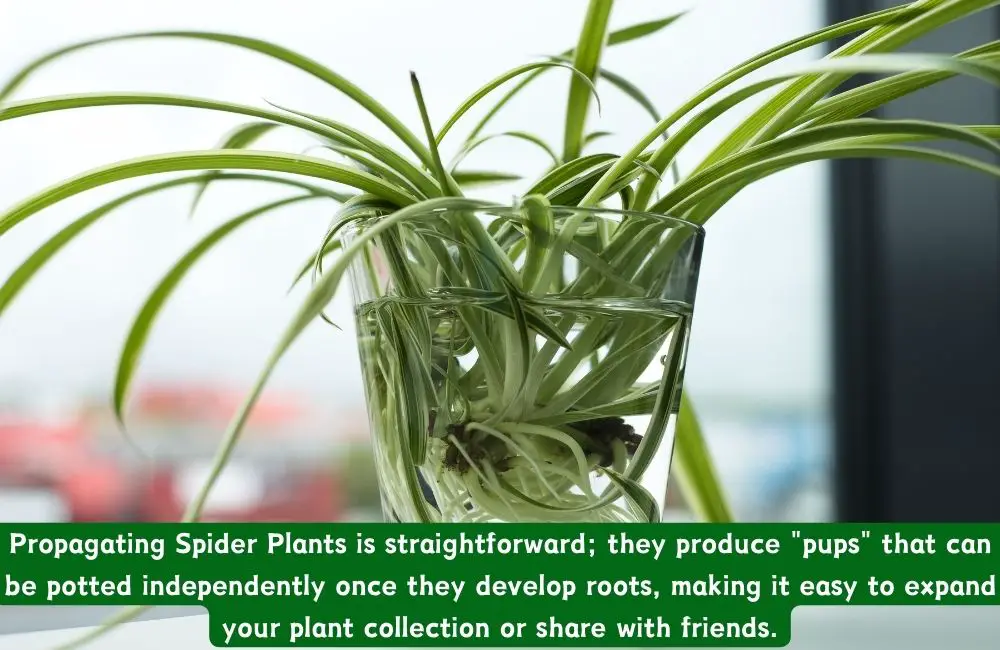
Propagating Spider Plants is straightforward. Once they develop roots, they produce “pups” that can be potted independently, making it easy to expand your plant collection or share with friends.
Spider Plants are prolific in producing offsets, also known as “pups,” which hang from the parent plant on long stems. These pups are complete miniature plants that can grow roots even before they are separated from the mother plant. This characteristic makes Spider Plants particularly rewarding and easy to propagate.
To propagate, wait until the pups have developed a few roots. This usually happens while they are still attached to the main plant. Once you see these roots, you can gently remove the pup by cutting it free with a clean, sharp knife or by twisting it off by hand.
After separating a pup, plant it in a small pot filled with well-draining potting mix. Water it lightly to settle the soil around the roots and place the pot in indirect light. The new plant will gradually establish itself and start growing more vigorously.
Propagating Spider Plants helps expand your collection and makes for a thoughtful and personal gift to share with friends and fellow plant lovers.
Preventing Brown Tips

Preventing brown tips on Spider Plant leaves involves using distilled or rainwater and maintaining evenly moist soil, as over-fertilization, dry soil, and fluoridated water can cause these issues.
Brown tips on Spider Plants often show stress due to environmental factors. Over-fertilization can build salts in the soil, which can burn the plant’s roots and tips. Regularly flushing the soil with water can help remove excess salts.
Using distilled or rainwater can significantly reduce the risk of brown tips. Tap water often contains fluoride and other chemicals that can accumulate in the soil and damage the plants. If distilled water is unavailable, letting tap water sit overnight before use can also help some chemicals evaporate.
It’s important to keep the soil of your Spider Plant evenly moist but not waterlogged. Water the plant when the top inch of soil feels dry to the touch. Ensuring proper watering and using the right type of water can keep your Spider Plant healthy and free of brown tips, promoting lush, vibrant growth.
Dealing with Pests
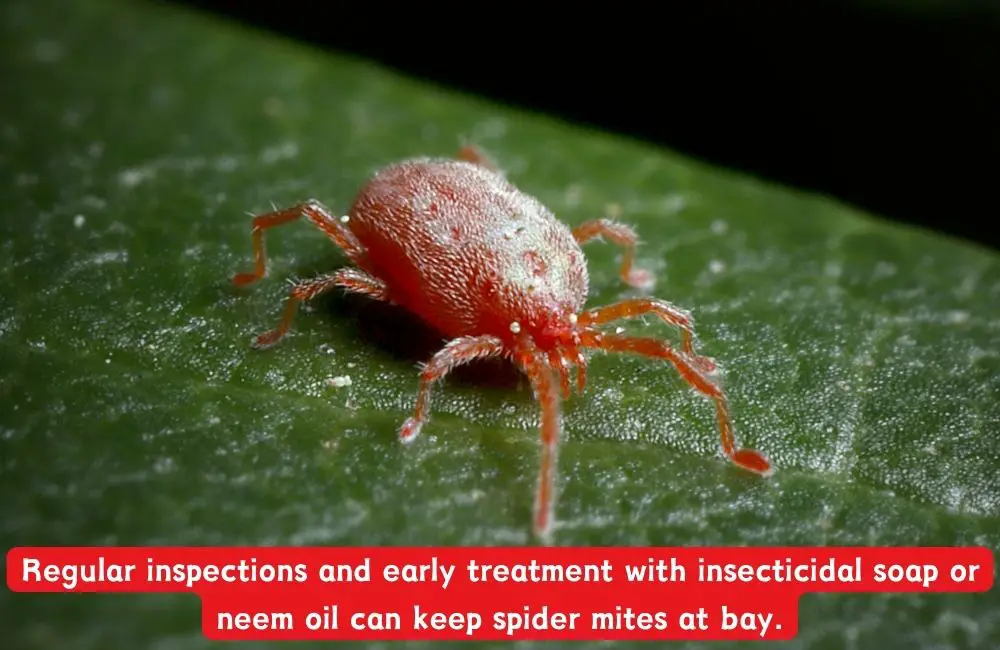
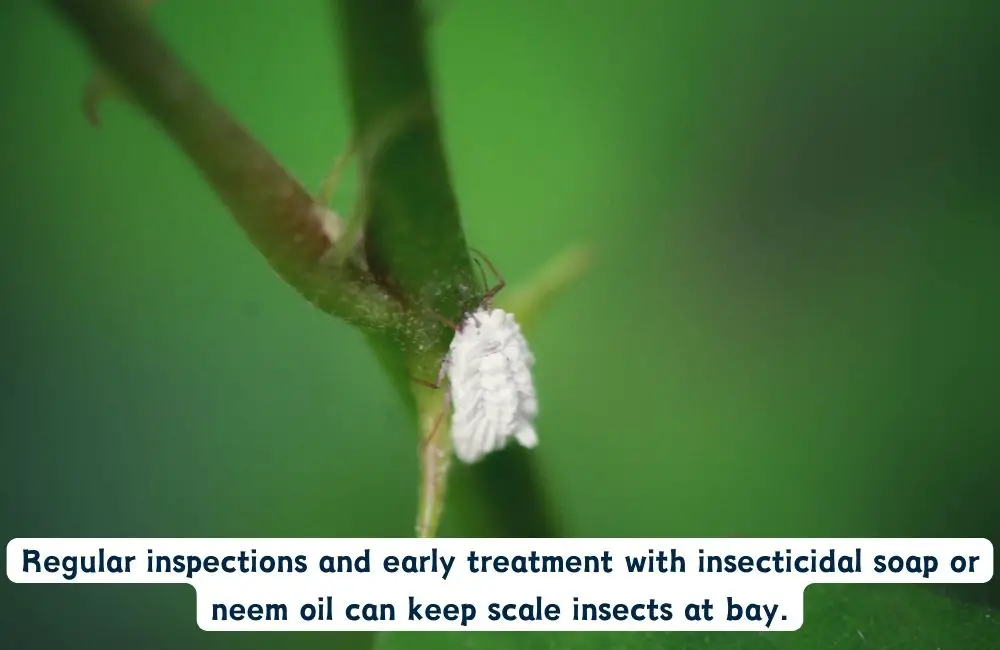
Despite their pest resistance, Spider Plants can attract spider mites and scale insects. Regular inspections and early treatment with insecticidal soap or neem oil can keep these pests at bay.
Spider Plants are generally robust and resistant to many pests but not immune. Spider mites and scale insects can sometimes find their way to these plants. Regular checks are crucial for early detection of any signs of infestation, which typically include visible bugs, webbing, or sticky residues on the leaves.
If you discover pests, act quickly to prevent them from spreading or causing significant damage. Insecticidal soap and neem oil are effective, safe options for treating these infestations. These products suffocate pests upon contact, so thorough application is necessary. Be sure to cover all plant surfaces, including the undersides of leaves, where pests often hide.
Additionally, maintaining a clean and healthy environment for your Spider Plant can help prevent pests. Ensure the plant is not stressed by poor watering habits or inappropriate lighting, as stressed plants are more susceptible to pest problems.
Regular pruning of dead or unhealthy foliage also helps keep the plant healthy and less attractive to pests. By following these preventive measures and acting quickly when pests appear, your Spider Plant can continue to grow healthily and vigorously.
Final Note
Growing Spider Plants is a delightful and rewarding experience that brings both beauty and health benefits to your home. Their minimal care requirements and resilient nature make them a perfect choice for both beginner and seasoned gardeners. By following the simple care guidelines provided, you can enjoy these lush, air-purifying plants for years to come.
Embrace the joy of gardening with Spider Plants, and watch as they transform your living spaces into vibrant green havens. Whether you’re looking to purify your home’s air or add a touch of nature to your decor, Spider Plants is a fantastic choice that promises satisfaction and a dash of green charm. Happy planting!
Frequently Asked Questions
Water spider plants once a week during growth season, but reduce to every two to three weeks in winter.
Use well-draining potting soil for spider plants, ideally a mix containing peat, vermiculite, or perlite.
Position spider plants in bright, indirect sunlight. Direct sun can scorch the leaves, so avoid excessive exposure.
Yes, spider plants can be propagated by planting the small plantlets that grow from the mother plant.
Common pests include spider mites and aphids. Wash off pests with water or use insecticidal soap for treatment.
Tips of spider plant leaves turn brown due to fluoride in water, low humidity, or salt buildup in the soil.
Fertilize spider plants monthly during spring and summer with a balanced, water-soluble fertilizer diluted to half strength.
Spider plants are non-toxic and safe for pets. They pose no risk to cats or dogs if ingested.
Keep spider plants in temperatures between 13°C to 27°C (55°F to 80°F) for optimal growth.
Trim brown or damaged leaf tips and remove old plantlets to encourage new growth and maintain plant health.






